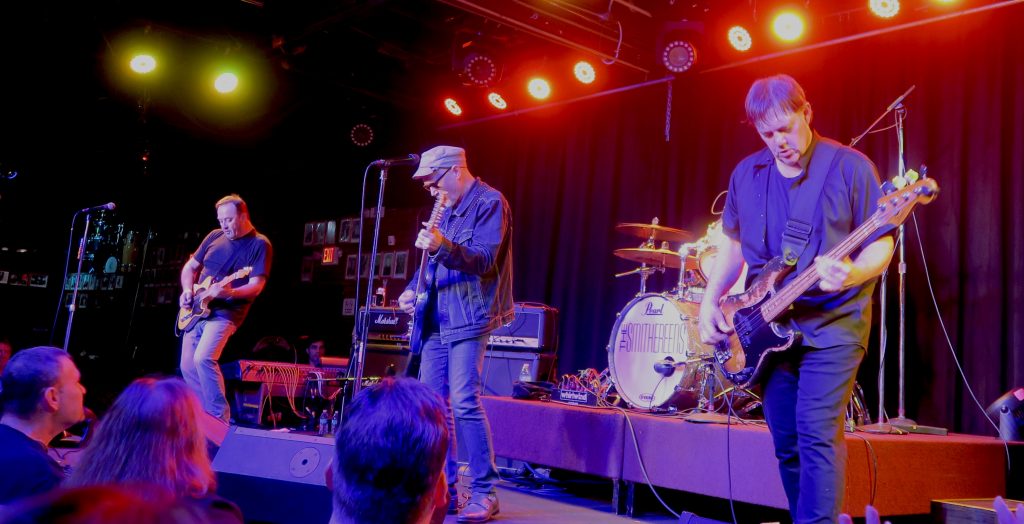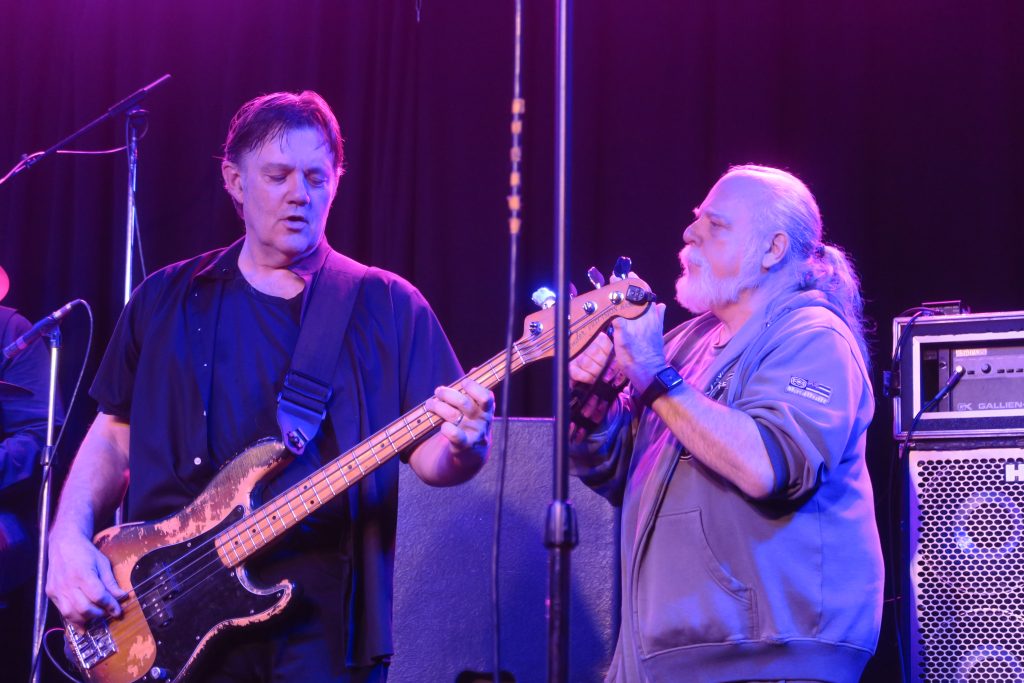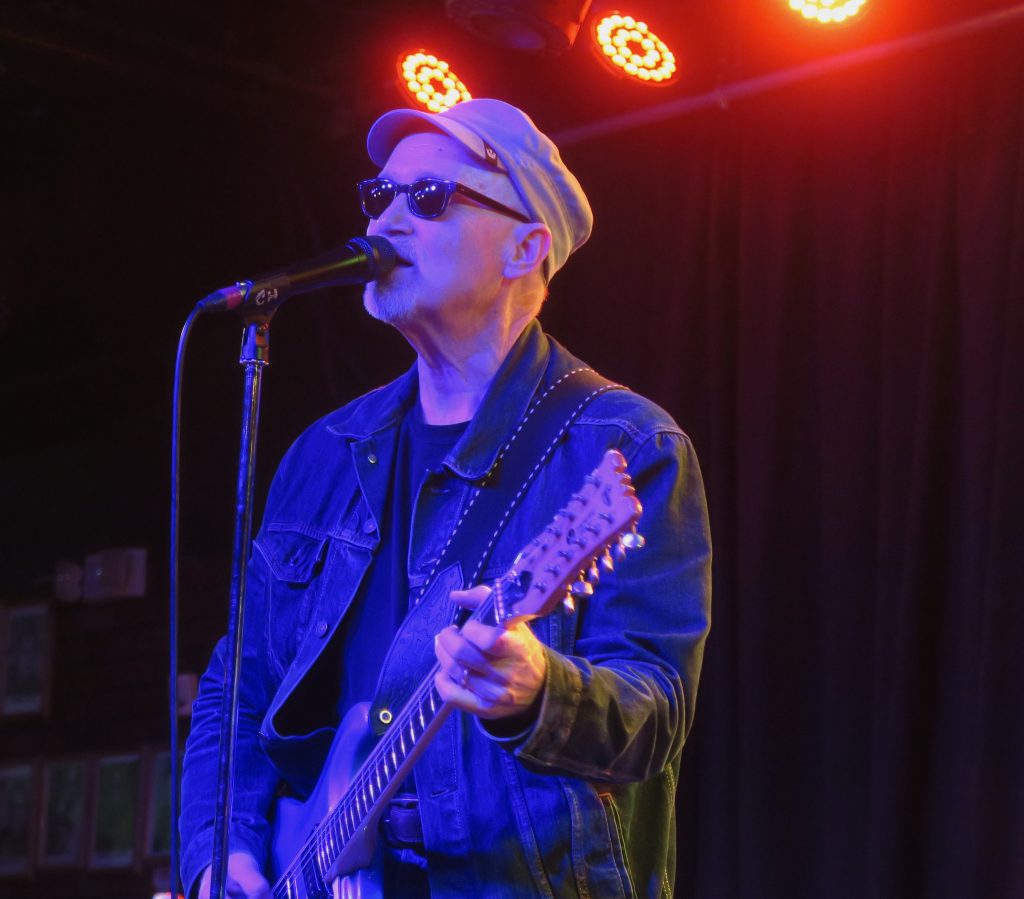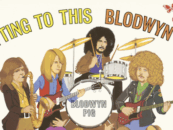
Marshall Crenshaw fronting the Smithereens at the Coach House, Feb. 2019 (Photo: Thomas K. Arnold; used with permission)
Since 1986, The Smithereens have played the Coach House more than a dozen times, the band’s guitarist Jim Babjak told the audience at the power-pop quartet’s Feb. 10, 2019, concert at the venerable San Juan Capistrano, Calif., venue.
But this appearance marked a departure from prior engagements: It was the Smithereens’ first show there since the December 2017 death of singer and songwriter Pat DiNizio, the architect of the band’s captivating, 1960s-influenced, New Jersey-meets-the Beatles sound.
With Marshall Crenshaw subbing for DiNizio, the band’s sold-out concert was as much a joyous celebration of the life, and songs, of their former leader as it was a good old rock ’n’ roll show by a band that never really got its commercial due.
Watch Crenshaw and the Smithereens perform “Behind the Wall of Sleep” at an earlier concert in New Jersey
Related: BCB’s obituary of Pat DiNizio
The Smithereens emerged at the tail end of the original punk scene, during that brief period between 1979 and 1981 when power pop—think the Knack—was being hailed as the next big thing. By the time the band’s first album, on Enigma Records, came out in 1986, power pop was waning and the Smithereens stood alone amid a sea of British synth-poppers and U.S. grunge-rockers. And while they did all right—scoring a handful of moderate hits throughout the late 1980s and into the early 1990s with gems like “Only a Memory” and “A Girl Like You”—they never quite grasped the ring of superstardom that many critics felt they so rightfully deserved.
Related: 10 great power pop songs
For the last 25 years they’ve been without a major label deal, but they’ve remained favorites on the road, touring incessantly and recording a string of minor-label albums in which they’ve been free to celebrate their influences, including a cover of Meet the Beatles and a remake of the Who’s Tommy.
At the Coach House, the band—now back with original bassist Mike Mesaros, who left for a decade to raise a family in San Francisco before rejoining after DiNizio’s death—played with a jubilant furor that would have made their late frontman proud.
Crenshaw respectfully kept his own solo hits tucked away and sang lead as a member of the band. He wasn’t there to outshine anyone, but, rather, to fill a void, to do a job. And yet the fact remains that he’s a marvelous singer, and his voice meshed perfectly with the band as it opened with the brooding “Behind the Wall of Sleep,” one of their earliest quasi-hits, from their 1986 debut album.
With the second song, “Top of the Pops,” off 1991’s Blow Up, the temperature in the room began to rise, as the musicians found their stride and the band ran through its brief but potent catalog of power-pop anthems, from the haunting “Only a Memory” to the Beatlesque “Now and Then” and the bittersweet “House We Used to Live In,” with DiNizio’s songwriting at its finest as he navigates the memories, both happy and sad, of a long-ago relationship: “This is the house we used to live in/Where I once shared my life with you…. House where I left my heart…. It is empty now/Worn and broken like our dreams.”
Babjak is a remarkable guitarist, and his performance at the Coach House didn’t disappoint. He looks like Tony Soprano but comes across as the guy you meet in a bar and offer to buy him a drink, only to find he’s already ordered one for you. Babjak took a turn at lead vocals on “Life is So Beautiful,” off 1994’s A Date with the Smithereens, their first (and only) album for RCA after having been dropped by Capitol.
The band also tore through several covers, including the Beatles’ “When I Get Home,” the Who’s Sparks” and the Kinks’ “Tired of Waiting for You,” with the group’s version of Buddy Holly’s “Well All Right” touching off a string of tributes and stories from the bandmates about their late leader. Holly is something of a link between the Smithereens and Crenshaw, with DiNizio citing the rock legend as his single biggest influence and Crenshaw having played Holly in the movie La Bamba.
Mesaros reminisced about how he, Babjak and drummer Dennis Diken used to listen to 45s while all three were growing up in Carteret, N.J.—“great songs by the Who, the Kinks, the Beatles, the Beach Boys,” he said.
After graduating from Carteret High School in 1975, they continued their friendships and began playing music themselves. The Smithereens came together in 1980 when DiNizio, at the time, working as a garbage man, placed an ad in a local newspaper looking for a drummer. Diken answered the call and brought along his two friends, Babjak and Mesaros.
The three surviving band members shared how they used to practice at DiNizio’s house in Scotch Plains, N.J. “At first we were in the basement, then we graduated to the garage,” Mesaros recalled. He gave credit to DiNizio’s father, who had to get up at 3 a.m. for a blue-collar job. “Even though he had to sleep, he let us practice,” Mesaros said. The elder DiNizio also cured bacon and other meats in the basement. “I used to run my fingers on the bacon and get my fingers real greasy; that’s how I learned to play the bass fast,” Mesaros said.
The bassist also recounted how the tolerant father only grew livid when he realized the boys had been getting into his Scotch.

Mike Mesaros and producer Ed Stasium at the Coach House, Feb. 2019 (Photo; Thomas K. Arnold; used with permission)
Toward the end of the show, the band was joined on stage by bassist Severo “Thrilla” Jornacion, who toured and recorded with the Smithereens from 2006 to 2017, and celebrated punk producer Ed Stasium, who drove up from San Diego, where he now lives.
Stasium produced two albums by the Smithereens, 11 and Blow Up, as well as Crenshaw’s Life’s Too Short. By then, he was already something of a legend in punk circles. In 1977, he had engineered both the Ramones’ Leave Home and Talking Heads’ Talking Heads ’77. He subsequently produced the Ramones’ Road to Ruin, It’s Alive and the soundtrack to Rock ’n’ Roll High School.
He and “Thrilla” shared tambourine and background vocal duties on the two-hour set’s closing numbers, “Time and Time Again” and “Blood and Roses” (their first hit, featured in the movie Dangerously Close and the TV show Miami Vice), as well as on their triple-play encore of “War for My Mind,” a cover of Badfinger’s “No Matter What” and “A Girl Like You,” their only Top 40 hit.
Is your favorite band on tour? Check our comprehensive listing!
As the band members, joined by their two guest sidemen, took their final bow, Mesaros again called out DiNizio and rallied the audience into giving him a toast.
It was a fitting end to the concert—and hopefully the beginning of a new chapter in the life of a band that’s made “almost been” a mark of honor, and a badge of pride.
Watch “The House We Used to Live In” from a New Jersey show by the Smithereens with Crenshaw
- Blondie & The Damned 2022 Tour Review—The Punk Era Lives! - 03/06/2025
- Burton Cummings of the Guess Who: 2025 Live Review - 01/18/2025
- Jimmy Webb Performs His Classic Songs: Concert Review - 10/23/2024







No Comments so far
Jump into a conversationNo Comments Yet!
You can be the one to start a conversation.